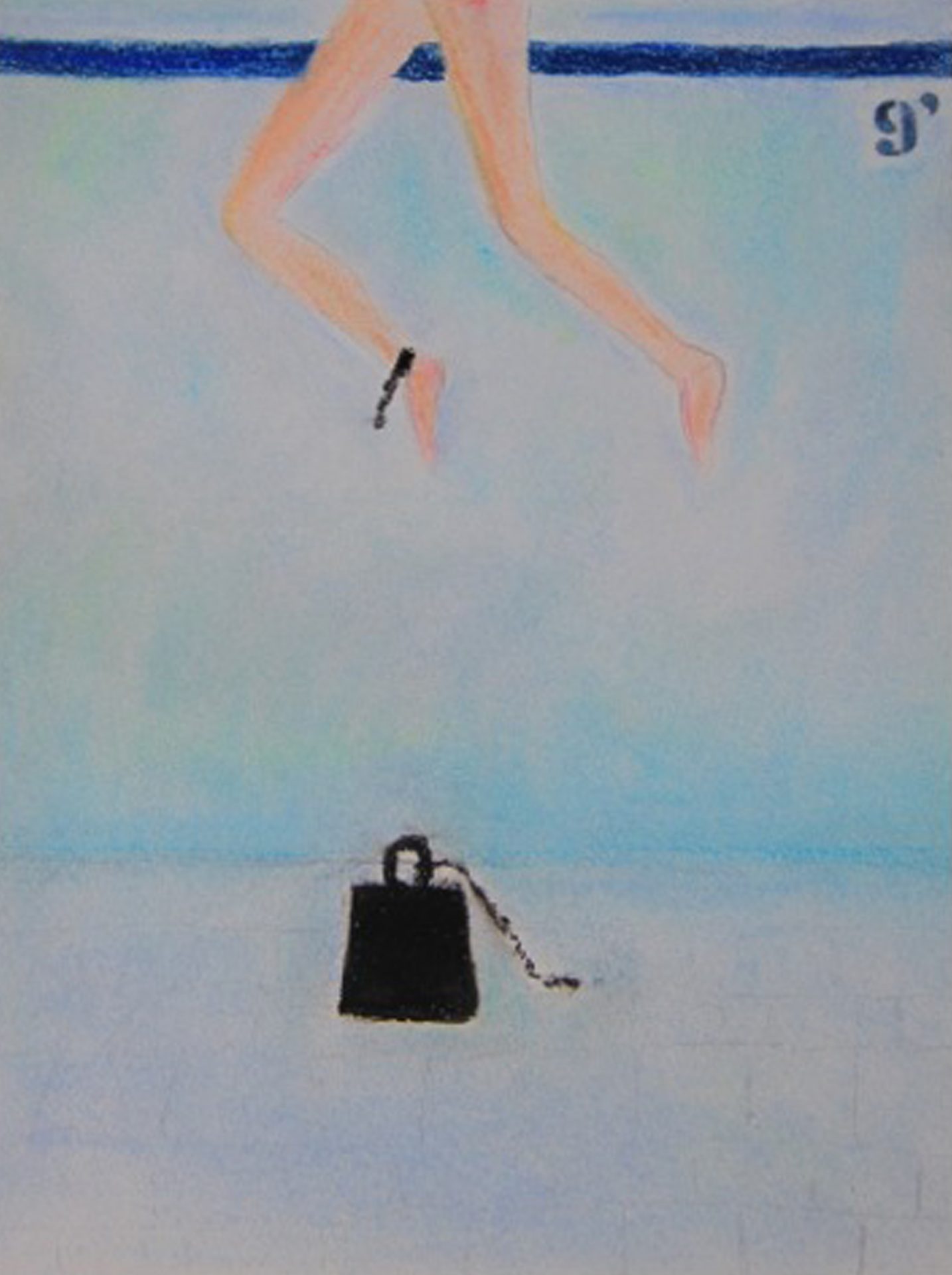All Men are Equal
This quote has inspired my reflective piece. My artwork illustrates Mary in a swimming pool, floating above a weight from which she has been relieved of her metaphorical shackles.
In describing herself as weightless, Mary was reflecting on the effect of buoyancy, implying that everyone was equal because everyone has buoyancy in water. Her condition does not identify her as less able than other people. She faces no stigma when she swims. I considered also that word ‘weight’ has a double meaning. In my eyes, the weight also represented the weight of her life: the burden that her condition represents to her. Rheumatoid arthritis has changed her life dramatically. She could no longer carry on at work, doing the job she had loved. She retired at the aged of 50. Not only does Mary now struggle to carry out basic activities around the house because of the swelling in her hands, she also has the stress of looking after her elderly mother, who suffers from Alzheimer’s disease. Mary does not have a strong support system. She has no children, and her brother lives in America. Her husband does help, but only in caring for Mary’s mother. He appears to struggle with the acceptance of Mary’s own condition. Whenever her symptoms are bad, he hides in the garden rather than face up to his emotions. Mary looks after everyone and feels that she receives little care in return. The stress of looking after others has placed an additional burden on her life. Hearing her words, I was saddened enormously. I felt that she was stuck in an almost hopeless situation.
My artwork demonstrates the act of swimming, relieving Mary of her weight and becoming ‘equal’ to others. Her body weight and the weight of her life has been ‘detached’ and Mary is free; free to escape and, for a short while, enjoy herself. I decided to use the medium of pastels, which allowed blending, in order to demonstrate the lightness of Mary. I decided to use this medium to illustrate that Mary blended in with others. I also decided to adopt a naive approach. Naive art is characterized by a simple, unaffected and direct style, and rarely uses shading or shadowing, and as a result, figures often look like they are floating in raw space. This is the effect I wanted to achieve in my artwork.
Mary is aware of what little she is able to do and is very accepting of her illness. Her life is challenging, but she strives to remain positive. I found this to be inspirational.
Mary’s story made me reflect about two important matters. First, as a doctor you must be able to place yourself in the patient’s shoes in order to gain a better understanding of their situation. And second, doctors must sometimes recognize that some treatments, although not obvious, may be more helpful than expected. Hydrotherapy not only relieves Mary’s physical pain, but also aids her emotional struggle.
(* For the purpose of this exercise, I have changed the patient’s name in order to prevent any breach of patient confidentiality)

0 Comments